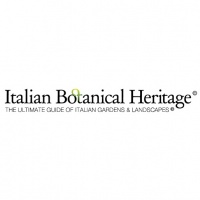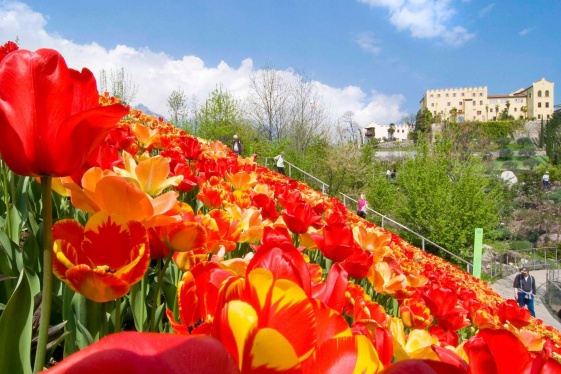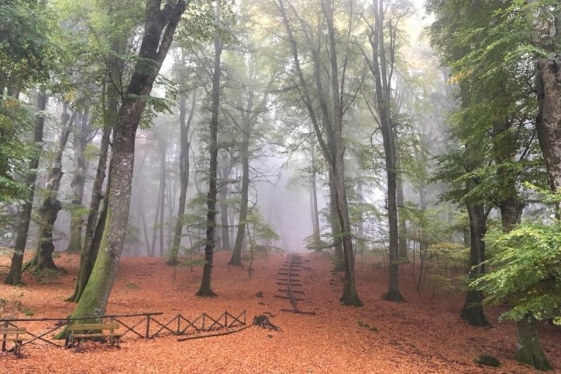
Italian Botanical Heritage
Italian Botanical Heritage is a project aimed at fostering the knowledge of the Italian botanical, artistic and cultural Italian heritage and the development of green tourism in Italy, and to become a virtual meeting platform between enthusiasts of this field.
Italian gardens and parks: Amastuola Garden Vineyard
It has been called the "most beautiful vineyard in the world" by "National Geographic" and other major international magazines: it is located in Amastuola, among the hills of Crispiano, in the province of Taranto, immersed in a wonderful landscape composed of maritime pines, centuries-old olive trees and Mediterranean scrub, with a very ancient his...
Italian gardens and parks: S'Abba Frisca Park-museum
The privately owned museum is located in Dorgali, within a park full of waters fed by the spring "S'Abba frisca" (in Italian “acqua fresca”, as to say fresh water). The main theme of the park-museum is summarized in two itineraries: naturalistic and ethnographic. The itinerary begins with the presentation of plant species: narrow-leafed bonewort, c...
Italian gardens and parks: Hanbury Botanical Gardens
The Hanbury Botanical Gardens stand on the Mortola promontory on the Ligurian coast, a few kilometers from the French border. They occupy an area of 18 hectares, included in the municipal territory of Ventimiglia, Mortola locality, in the province of Imperia. The landscape appearance is typically English, with irregular paths and romantic rustic pe...
Italian gardens and parks: Monte San Bartolo Regional Natural Park
Established in 1994, the Monte San Bartolo Regional Natural Park covers about 1,600 hectares in the province of Pesaro Urbino, along the coastal area and the hill ridge between the municipalities of Pesaro and Gabicce Mare. Its territory presents a rather heterogeneous environmental mosaic, with very diverse plant associations, also depending on a...
Italian gardens and parks: Villa Comunale Umberto I° Botanical Park of Reggio Calabria
Established as a Botanical Garden, the Municipal Villa of Reggio Calabria was built by the Società Economica e Comizio Agrario, which had purchased the area in 1850. In 1880 a neoclassical-style building was built inside to house the Metereological and Geodynamic Observatory. At the end of the 19th century the Botanical Garden became state property...
Italian gardens and parks: Antonio Segni Alpine Garden
The Antonio Segni Alpine Garden is located at the foot of the Dolomite cliff of the Civetta Group, on the southern slope dominated by the imposing and elegant walls of Cima Busazza, Torre Venezia and Torre Trieste. It was founded in 1963 as part of the CAI Conegliano section with the purpose of publicizing the beauty and diversity of the Dolomite a...
Italian gardens and parks: The National Park of Gran Sasso
The National Park of Gran Sasso and Monti della Laga, established in 1991, is located mostly in Abruzzo (province of L'Aquila, Teramo and Pescara) and to a lesser extent in the adjacent areas of Lazio (Rieti) and Marche (Ascoli Piceno). It includes 44 municipalities and it extends for 160.000 hectares of which 135.000 in Abruzzo. To its inside they...
Italian gardens and parks: The gardens of Trauttmansdorff Castle
The Gardens of Trauttmansdorff Castle, also known as the Gardens of Sissi, in honor of the beloved Austrian empress who stayed there several times from 1870, are located in Merano, on a large sun-kissed amphitheater, occupying a sloping area of 12 hectares. Opened in 2001, they bring together 80 botanical environments, including landscapes, themed...
Italian gardens and parks: The Ancient Beechwood of Mount Cimino
Mount Cimino, with its 1,053 above sea level, is the highest peak of the Lazio Anti-Apennine chain of Cimini Mountains, in the province of Viterbo, in Tuscia. The mountain overlooks the municipality of Soriano nel Cimino, where a wonderful beechwood of 58 hectares extends from 600 to 1053 meters of altitude. Among the most impressive and beautiful...
Italian gardens and parks: Persano Oasis
WWF’s Oasis of Persano was established in 1980 to protect the artificial lake by the same name, which was created in 1930 thanks to the blocking of the Sele river. It is located in the municipality of Campagna and Serre (Salerno, in Campania), in the upper part of Piana del Sele, at the internal top of the fan-shaped plain opened to the see between...
Italian gardens and parks: Valsolda Regional Forest
This forest, one of the wildest in the region, stretches for about 786 acres on the limestone Prealps of Lombardy. It borders with Switzerland and with with the municipalities of Porlezza and Val Rezzo. In 2004, it was included in “Natura 2000” site collection and was acknowledged as a “Special Protection Area” (SPA). In 2007, it was declared a Reg...
Italian gardens and parks: Maria Ansaldi Botanical Garden
Built in 1984 by Mountain Community of Garfagnana, this garden is used mainly for educational, scientific and instructional purposes, while it collects, protects and preserves the native flora of the Upper Lucchese Apennines, with special attention to the rare and endangered species. The Garden, which falls in the southernmost part of the Tuscan-Em...














